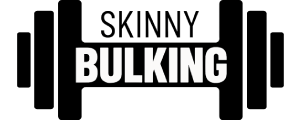Building muscle is a great way to improve your health and fitness, but it’s important to do it safely and effectively. With so much information available on the internet, it can be overwhelming and confusing for beginners to know where to start. In this post, we’ll provide you with a beginner’s guide to building muscle safely and effectively. We’ll cover everything from creating a workout plan, to proper form and technique, to nutrition and rest. By following these tips, you’ll be able to build muscle and improve your overall health without risking injury or burnout. Whether you’re just starting out or looking to take your fitness to the next level, this guide is for you.
1. Set Your Goals and Make a Plan
Setting your goals and making a plan are the first steps to building muscle safely and effectively. You need to define what you want to achieve, and how you plan to get there. Whether you want to lose weight, bulk up, or just get in better shape, setting specific, achievable goals can help you stay motivated and focused.
Once you know what you want to achieve, you need to make a plan. This should include details such as your workout schedule, the exercises you will do, and the diet you will follow. It’s important to remember that building muscle safely and effectively requires a holistic approach that includes both exercise and nutrition.
When creating your plan, it’s also important to be realistic. Don’t set yourself up for failure by creating a plan that’s too ambitious or unrealistic. It’s better to start small and gradually increase your goals as you progress.
Finally, be sure to track your progress. Keeping track of your workouts, your diet, and your progress towards your goals can help you stay motivated and on track. You can use a journal, an app, or simply a spreadsheet to keep track of your progress. Whatever method you choose, make sure you use it consistently so you can measure your progress over time.
2. Focus on Compound Exercises

Image: pexels
When it comes to building muscle, it’s important to focus on compound exercises. Compound exercises are exercises that work multiple muscle groups at the same time. These exercises are great for building overall strength and muscle mass, and they should be the foundation of any muscle-building program.
Some examples of compound exercises include squats, deadlifts, bench presses, and pull-ups. These exercises work multiple muscle groups, including the chest, shoulders, back, legs, and core.
Compound exercises also help to improve your overall fitness and athleticism. They improve your balance, coordination, and mobility, and they can even help to reduce your risk of injury.
To get the most out of your compound exercises, it’s important to use proper form and technique. Focus on using a weight that is challenging but manageable, and aim to perform each exercise with good form and full range of motion.
Incorporating compound exercises into your workouts is a great way to build muscle safely and effectively. Not only will you see better results, but you’ll also improve your overall fitness and health.
3. Use Proper Form and Technique
When it comes to building muscle, using proper form and technique is essential for both safety and effectiveness. Lifting weights with improper form can lead to injuries and setbacks in your progress, while using proper technique will help you build muscle more efficiently.
To ensure proper form and technique, it’s important to start with lighter weights and focus on mastering the movement patterns. This means using a slow and controlled motion, keeping your core engaged, and maintaining proper alignment throughout the exercise.
It’s also important to seek guidance from a qualified trainer or coach. They can assist you with proper form, provide feedback on your technique, and recommend exercises that are suited to your individual needs and goals.
In addition to using proper form and technique during weightlifting exercises, it’s also important to incorporate stretching and mobility exercises into your routine. This will help to increase your range of motion, reduce the risk of injury, and improve overall muscle function.
By focusing on proper form and technique, you’ll be able to build muscle safely and effectively, and avoid the common pitfalls that can derail your progress.
4. Increase Weight Gradually and Safely
When it comes to building muscle, it’s important to remember that it’s a gradual process. Don’t try to lift too much weight too quickly or you risk injuring yourself. Instead, start with a weight that you can comfortably lift for multiple repetitions with good form. As you get stronger, gradually increase the weight over time.
A good rule of thumb is to increase the weight by no more than 5 to 10% each week. This allows your body to adapt to the increased weight and helps prevent injury.
It’s also important to use proper form when lifting weights. Don’t sacrifice form in order to lift heavier weights. Using proper form not only helps prevent injury but also ensures that you’re targeting the right muscles and getting the most out of your workout.
If you’re unsure about proper form or how to safely increase weight, consider working with a personal trainer who can guide you through the process and help you develop a safe and effective workout routine. By increasing weight gradually and safely, you’ll be on your way to building muscle and achieving your fitness goals.
5. Give Your Muscles Time to Recover and Rest
When it comes to building muscle, many beginners make the mistake of thinking that lifting weights every day will get them results faster. However, in reality, rest and recovery are just as important for muscle growth as exercise itself.
During exercise, your muscles experience small tears, and it’s during rest and recovery that they repair and grow stronger. Without enough recovery time, you risk injury, fatigue, and burnout. So, how much rest is enough?
Most experts recommend taking at least one day off between workouts, giving your muscles time to recover. This means that if you’re doing a full-body workout on Monday, Wednesday, and Friday, you should take Tuesday, Thursday, and the weekend off.
Additionally, make sure you’re getting enough sleep. Aim for 7-8 hours of sleep each night to aid in muscle recovery and growth. Lastly, be sure to stretch and warm up before each workout, as well as cool down and stretch afterwards. This will not only help with recovery but will also prevent injury.
Remember, building muscle is a marathon, not a sprint. Give your body the time it needs to recover and grow, and you’ll see better results in the long run.
6. Pay Attention to Your Diet and Nutrition
Building muscle is not just about lifting weights and doing strenuous exercises. It’s also about paying attention to your diet and nutrition. What you eat and how much you eat plays a crucial role in building muscle safely and effectively.
To build muscle, you need to consume more calories than you burn. This means that you need to eat enough food to fuel your workouts and provide your body with the necessary nutrients to build muscle. Aim to eat a balanced diet that includes plenty of protein, complex carbohydrates, and healthy fats.
Protein is essential for muscle growth and repair, so make sure you’re getting enough of it. Good sources of protein include lean meat, fish, eggs, dairy, and plant-based sources such as beans, lentils, and tofu.
Carbohydrates are also important as they provide your body with energy for your workouts. Focus on complex carbohydrates such as whole grains, fruits, and vegetables. Avoid simple carbohydrates such as sugar and processed foods.
Finally, don’t forget about healthy fats. They play an important role in hormone production and can help improve your overall health. Good sources of healthy fats include nuts, seeds, avocado, and fatty fish.
In addition to paying attention to your diet, make sure you’re staying hydrated by drinking plenty of water throughout the day. This will help keep your muscles hydrated and can prevent cramping and injury. By focusing on your diet and nutrition, you’ll be able to build muscle safely and effectively while improving your overall health and wellness.
7. Monitor Your Progress and Make Adjustments as Needed

Image: pexels
As you start on your muscle-building journey, it is essential to monitor your progress and make adjustments as needed. This will help you to track your progress, identify what is working for you and what is not, and make necessary changes to your workout routine or diet plan.
To monitor your progress, you can take measurements of your body, such as your weight, body fat percentage, and muscle mass. You can also take progress photos, which will help you visually see the changes in your physique.
Another way to monitor your progress is to keep a workout journal. This journal will help you keep track of the exercises you are doing, the weight you are lifting, and the number of reps and sets you are completing. You can also note how your body feels after each workout, any soreness or discomfort, and how long it takes for your body to recover.
Once you have monitored your progress, you can make adjustments accordingly. For example, if you are not seeing any progress in a particular muscle group, you may need to change up the exercises or increase your weight gradually. Or if you are not recovering well between workouts, you may need to adjust your rest periods or reduce the volume of your workouts.
Remember, building muscle takes time, and progress may not always be linear. However, by monitoring your progress and making adjustments as needed, you can ensure that you are building muscle safely and effectively.
8. The Importance of Consistency and Patience
One of the most important things to keep in mind when building muscle is consistency and patience. It’s easy to get caught up in the excitement of starting a new workout routine and seeing quick results, but it’s important to remember that building muscle takes time and dedication.
Consistency is key when it comes to building muscle. This means sticking to a regular workout routine and not skipping sessions. It’s important to challenge yourself with each workout, gradually increasing the weight or reps over time. However, it’s also important to give your muscles time to rest and recover between workouts.
Patience is also crucial when building muscle. Many people expect to see results within a few weeks, but it can take months or even years to achieve your desired physique. It’s important to set realistic goals and focus on progress rather than perfection.
In addition, it’s important to remember that building muscle is a journey, not a destination. It’s important to enjoy the process and celebrate small victories along the way. By staying consistent and patient, you can achieve your muscle-building goals safely and effectively.
9. Common Mistakes to Avoid
When it comes to building muscle, there are several common mistakes that many people make that can hinder their progress or even lead to injury. One of the biggest mistakes is doing too much too soon. It’s important to gradually increase the weight you lift and the intensity of your workouts to avoid overstressing your muscles and risking injury.
Another common mistake is not taking rest days. Your muscles need time to recover and grow after a workout, so it’s important to give them a break. Overworking your muscles can lead to fatigue, injury, and slower progress.
Form is also crucial when it comes to building muscle. Many people sacrifice proper form in order to lift heavier weights, but this can also lead to injury and slower progress. Make sure to focus on proper form and technique, even if it means lifting lighter weights.
Nutrition is another key factor in building muscle, and many people make the mistake of not eating enough or not eating the right types of foods. Make sure to fuel your body with enough protein, complex carbohydrates, and healthy fats to support muscle growth.
Lastly, don’t neglect your cardiovascular exercise. Building muscle is important, but so is maintaining your overall health and fitness. Incorporating cardio into your routine can help improve your endurance and overall health.
10. Conclusion and Additional Resources
In conclusion, building muscle is a journey that requires dedication, discipline, and patience. By following the tips outlined in this guide, you can safely and effectively build muscle and achieve your fitness goals.
Remember to prioritize proper form and technique, gradually increase the intensity of your workouts, and fuel your body with a balanced and nutritious diet. It’s also important to listen to your body and rest when needed, as recovery is an essential part of the muscle-building process.
If you’re looking for additional resources to help you on your journey, there are many great online resources available. Fitness blogs, YouTube channels, and online forums are all great places to connect with like-minded individuals and learn from experienced fitness enthusiasts.
Additionally, consider hiring a personal trainer or working with a fitness coach to develop a personalized workout and nutrition plan that is tailored to your specific goals and needs. With the right mindset, knowledge, and support, you can build muscle safely and effectively and achieve the body you desire.







Leave a Reply